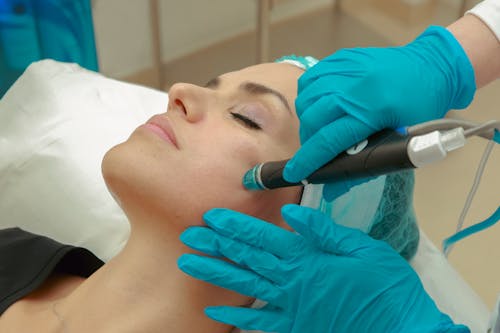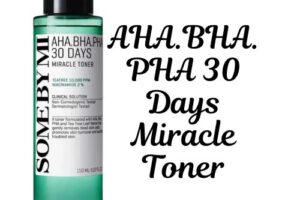Is Pore Vacuuming Effective or Harmful?
Introduction to Pore Vacuuming: A Trend Worth the Hype?

If you’ve ever dealt with those tiny black dots dotting your nose or chin, you know the frustration of blackheads. These pesky blemishes are open pores clogged with oil, dead skin cells, and dirt that oxidize when exposed to air, giving them their dark appearance. They’re officially called open comedones, while their less-visible cousins, whiteheads (or closed comedones), stay sealed beneath the skin’s surface.
In recent years, pore vacuums have become the go-to tool for tackling blackheads, riding the wave of modern, high-tech skincare gadgets. Promising an instant deep clean, these devices aim to literally suck the gunk out of your pores. But with all the hype surrounding them, do they deliver real results—or are they just another trend with potential risks? Let’s dive into this pore-purging phenomenon and see what it’s all about.
What Is a Pore Vacuum?
A pore vacuum is a handheld device designed to use gentle suction to remove oil, dead skin, and other debris clogging your pores. Think of it as a mini cleaning system for your skin, offering a seemingly satisfying way to tackle blackheads and congestion.
There are two main types of pore vacuums:
- Professional Devices: These are FDA-approved and typically used by dermatologists during in-office treatments. They’re equipped with advanced suction power and safety features, providing a deeper clean with minimal risks.
- At-Home Devices: More affordable and widely available, these tools come with adjustable suction settings and are easy to use at your convenience.
How to Use a Pore Vacuum Properly
Getting the most out of a pore vacuum requires a bit of preparation:
- Prep Your Skin: Start by steaming your face or using a mild exfoliant to loosen the debris in your pores.
- Follow Instructions: Glide the device gently over congested areas, such as the nose, chin, and forehead. Stick to the manufacturer’s advice, usually limiting to three passes per area to avoid irritation.
Effectiveness of Pore Vacuums
Pore vacuums can be effective, but their success largely depends on how you prepare your skin and integrate them into your skincare routine.
- Best for Pre-Loosened Blackheads: If you’ve steamed your skin or used pore-loosening products like salicylic acid or glycolic acid beforehand, pore vacuums can efficiently extract blackheads and debris.
- Temporary Results: While they offer visible improvements, the effects are short-lived. Your pores can refill with oil and debris over time, making consistent maintenance essential.
- A Supporting Role in Skincare: Pore vacuums should complement—not replace—proven methods like chemical exfoliants, retinoids, or regular cleansing routines.
What Do Experts Say?
Dermatologists often approach pore vacuums with a mix of approval and caution:
- The Upside: When used correctly, they can be a safe way to reduce clogged pores and improve skin texture.
- The Caveat: They’re not a miracle tool or an essential part of skincare. Misuse or overuse can irritate the skin or cause broken capillaries.
In short, pore vacuums can give your routine a boost, but they work best when paired with the fundamentals of good skincare.
Potential Risks and Precautions
While pore vacuums can be beneficial when used correctly, they do come with some risks that require careful consideration.
What Can Go Wrong?
Overuse or high suction settings can result in:
- Bruising or Redness: Particularly if the device is left on one spot for too long or used aggressively.
- Micro-Tears and Scabbing: Excessive suction may damage the skin’s surface, leading to irritation or peeling.
- Broken Capillaries (Telangiectasias): The vacuum’s force can cause tiny blood vessels to burst, leaving visible marks on the skin.
Who Should Avoid Pore Vacuums?
These devices may not be suitable for everyone, especially those with:
- Sensitive or Rosacea-Prone Skin: The suction can exacerbate redness and irritation.
- Inflamed Acne or Open Wounds: Using a pore vacuum on compromised skin may worsen inflammation or spread bacteria.
How to Stay Safe
To minimize risks and maximize benefits:
- Use Low Suction Settings: Start with the gentlest option and increase only if needed.
- Limit Usage: Once a week is sufficient to prevent over-exfoliation or irritation.
- Follow Instructions: Always adhere to the manufacturer’s guidelines to avoid improper use.
Alternatives to Pore Vacuuming
If you’re unsure about pore vacuums or find them too harsh for your skin, there are plenty of safer and dermatologist-approved methods to manage blackheads and clogged pores.
Dermatologist-Backed Solutions
- Salicylic Acid Cleansers: These penetrate deep into pores to dissolve excess oil and dead skin, making them a great first line of defense against blackheads.
- Glycolic Acid or Other AHAs: Gentle exfoliants that help shed dead skin cells and improve skin texture while reducing clogged pores.
- Retinoids: These powerhouse ingredients regulate cell turnover, preventing blackhead formation and promoting clearer skin over time.
- Clay or Charcoal Masks: Perfect for absorbing impurities, they provide a deep-cleaning effect without the need for suction.
Tips for Blackhead Prevention
To minimize the need for any extraction tools:
- Wash Your Face After Sweating: Sweat can trap oil and debris in your pores, so cleansing post-workout is essential.
- Always Remove Makeup: Sleeping with makeup on is a fast track to clogged pores and blackheads.
- Choose Non-Comedogenic Products: These formulations are specifically designed to avoid pore-clogging ingredients.
FAQs: Addressing Common Concerns
Do Pore Vacuums Damage Skin?
They can, especially if high suction settings are used or the device is overused. Potential issues include bruising, redness, and even broken capillaries. To avoid this, stick to low suction levels and limit usage to once a week.
Can Pore Vacuums Remove Pimples?
No, pore vacuums are not designed for inflamed acne or pimples. Using them on active breakouts can worsen inflammation, increase the risk of scarring, and spread bacteria.
Should I Moisturize After Using a Pore Vacuum?
Absolutely. After pore vacuuming, your skin may feel slightly dry or sensitive. Apply a gentle, non-comedogenic moisturizer to replenish hydration and calm your skin.
These answers address the most common worries, helping users approach pore vacuums with realistic expectations and safer practices.
Conclusion: Effective or Harmful?
Pore vacuums sit in a grey area—they can provide visible short-term improvements, especially for mild blackheads, but they’re not a miracle solution. Their effectiveness largely depends on proper use, including preparation, settings, and moderation.
However, they are far from essential and may not suit everyone. Overuse or misuse can lead to unwanted side effects like irritation or broken capillaries. For those dealing with persistent blackheads or other skin concerns, pore vacuums should be viewed as an occasional supplement, not the cornerstone of skincare.
Ultimately, the safest and most effective approach is to pair regular pore vacuum use with dermatologist-approved methods and seek professional advice for severe or recurring issues.














Post Comment